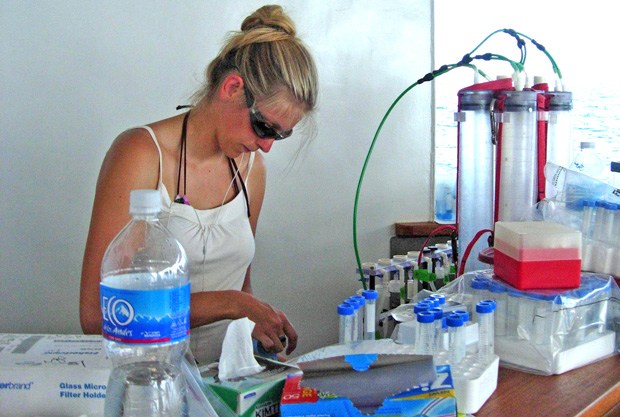Piggybacking viruses
 Katie Barott filtering water for microbial counts on the ship in the Line Islands. (Image courtesy of Forest Rohwer)
Katie Barott filtering water for microbial counts on the ship in the Line Islands. (Image courtesy of Forest Rohwer)In the microscopic life that thrives around coral reefs, a team of researchers, including Katie Barott, postdoctoral researcher at the Hawaiʻi Institute of Marine Biology, have discovered an interplay between viruses and microbes that defies conventional wisdom. As the density of microbes rises in an ecosystem, the number of viruses infecting those microbes rises with it. It has generally been assumed that this growing population of viruses, in turn, kills more and more microbes, keeping the microbial population in check. It’s a model known as “kill-the-winner”—the winners being the blooming microbial cells and the killers being the viruses (mostly bacteria-killing viruses known as bacteriophages) that infect them.
However, previous research has suggested that, under certain conditions, viruses can change their infection strategy. As potential host microbes become more numerous, some viruses forego rapid replication and opt instead to reside peaceably inside their host, thereby reducing the viruses’ numbers. In a study published recently in the journal Nature Barott, along with lead authors Ben Knowles and Cynthia Silveira, both in Forest Rohwer’s lab at San Diego State University, and co-authors refer to this alternative model as “piggyback-the-winner,” and it could have implications for phage-based medicine and ecosystem resilience in the face of environmental disturbances that promote microbial blooms.
Read more about it in the UH System News.



